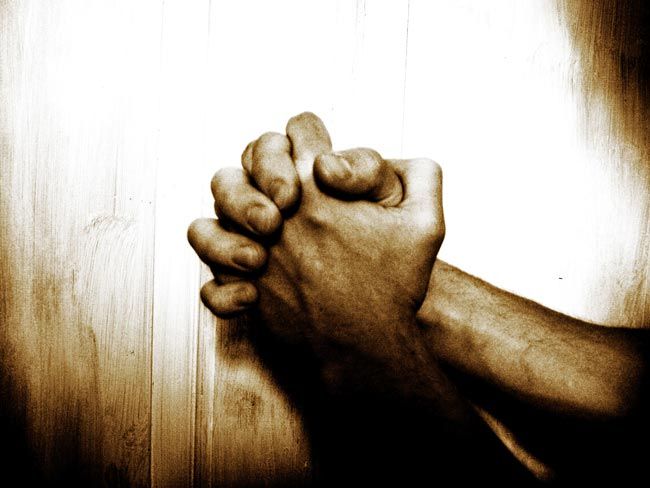Americans Pray for Health Now More Than Ever

More Americans are praying for their health now than in years past, a new study says.
Over the last decade, the percentage of Americans who say they pray for their health rose by 36 percent, the researchers say.
Previous studies suggest prayer can improve perceptions of mental and physical health and serve as a protective buffer against depression, anxiety and stress.
People are likely using prayer as a supplement to and not as a substitute for, traditional medical care, the researchers say.
"We're seeing a wide variety of prayer use among people with good income and access to medical care," said study researcher Amy Wachholtz, an assistant professor of psychiatry at the University of Massachusetts Medical School. "People are not exchanging health insurance for prayer."
After the 9/11 attacks, there was an increase in worship attendance in the United States, Wachholtz said. Increased participation in religious activities after the 9/11 may partly explain the rise in prayer for health, she said.
"There's been a lot of changes in the world around us in the past 15 or so years," Wachholtz said. "While participation in public religious activities has not maintained at that high level (that it was immediately after 9/11), it does appear people continue to participate in private religious activities," such as prayer and meditation, Wachholtz said.
Sign up for the Live Science daily newsletter now
Get the world’s most fascinating discoveries delivered straight to your inbox.
Who prays for their health?
Wachholtz and colleagues analyzed information from the National Health Interview Surveys, which, among other questions, asked participants whether they prayed for their health in the last year. The study looked at responses from more than 31,000 adults in 2002 and 23,000 adults in 2007.
Between 2002 and 2007, the percentage of adults who prayed for their health increased from 43 percent to 49 percent. An earlier study found the percentage of people who prayed for their health in 1999 was 13.7 percent, indicating a dramatic boost in this practice over those 10 years.
Women were more likely to use prayer for their health than men. In 2002, 51 percent of women said they prayed for their health compared with 34 percent of men. In 2007, the percentages were 56 percent versus 40 percent for women and men, respectively.
Those who had experienced a worsening or amelioration of their health were more likely to pray. This suggests those with a progressive disease or those who experience a sudden change in their health are more likely to turn to prayer as a way to cope with the situation, the researchers say.
Those who prayed for their health were also more likely to be African-American, married and have education beyond high school. However, those with high incomes and those who exercised regularly were less likely to pray for their health, the researchers say.
Doctors and patients
It's important for doctors to recognize there is a connection between spirituality and health, Wachholtz said. Doctors should make sure their patients have access to the resources they need if the patients consider themselves to be religious or spiritual, Wachholtz said.
"It’s important to be aware of what resources your patient has and how they're using those resources," Wachholtz said. For instance, if the patient is hospitalized and has a religious background, the doctor could make sure there is a chaplain on board at the hospital if the patient requires one, she said.
A 2006 study found most doctors are willing to discuss religion with their patients, but only about half of doctors actually inquire about their patients' faith.
The new study is published in the May issue of the journal Psychology of Religion and Spirituality.
Pass it on: Americans are increasingly praying for their health.
This story was provided by MyHealthNewsDaily, a sister site to LiveScience. Follow MyHealthNewsDaily staff writer Rachael Rettner on Twitter @RachaelRettner.

Rachael is a Live Science contributor, and was a former channel editor and senior writer for Live Science between 2010 and 2022. She has a master's degree in journalism from New York University's Science, Health and Environmental Reporting Program. She also holds a B.S. in molecular biology and an M.S. in biology from the University of California, San Diego. Her work has appeared in Scienceline, The Washington Post and Scientific American.











